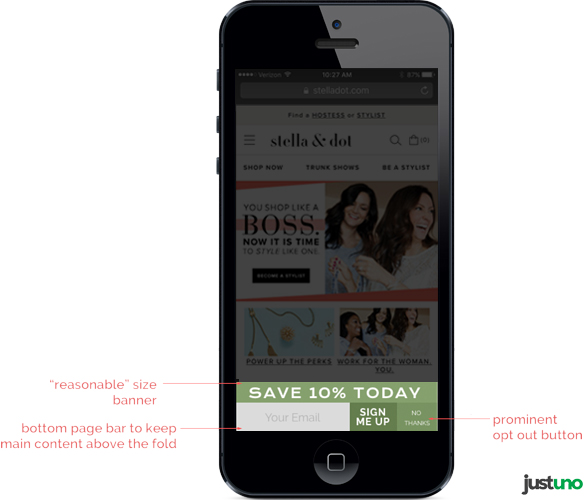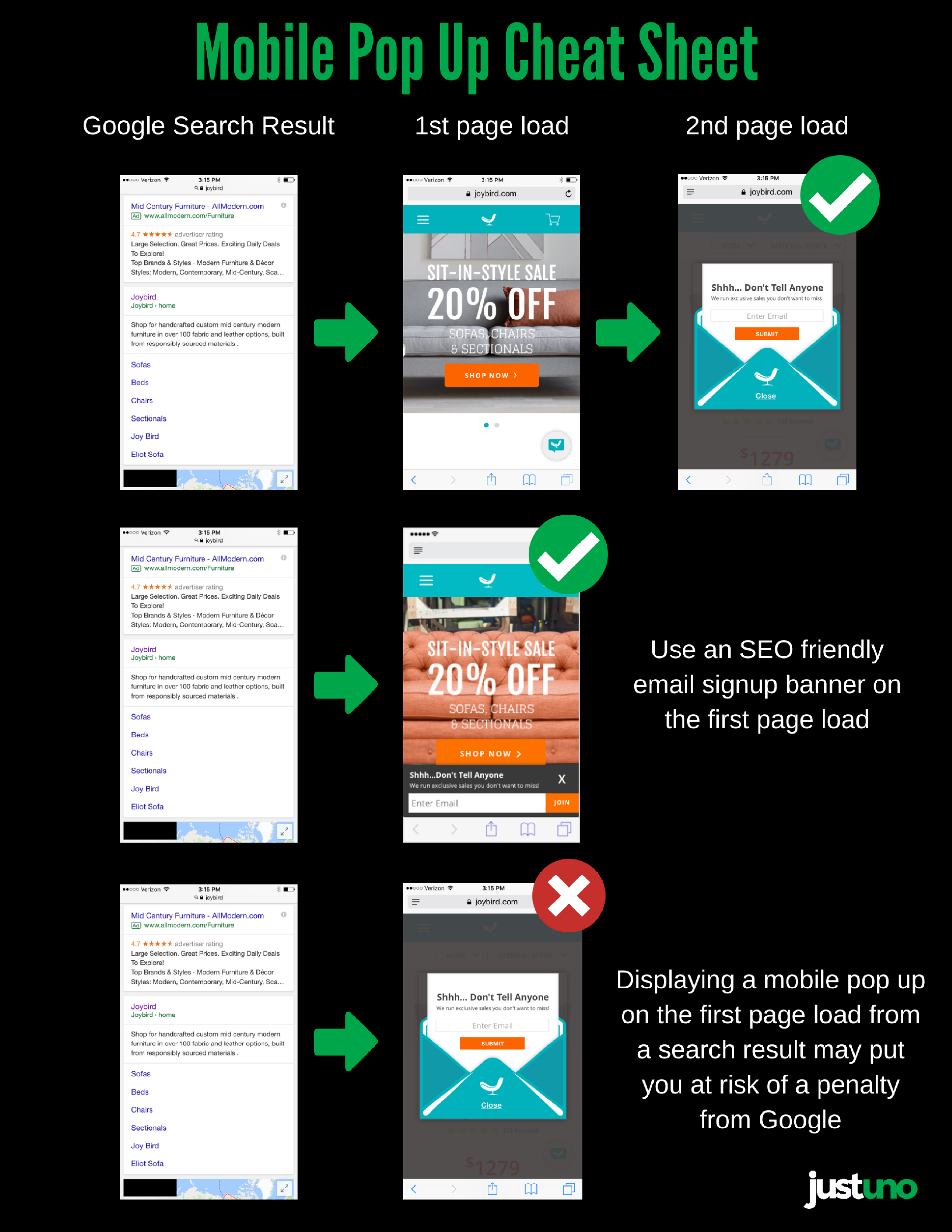Optimizing Mobile Promotions For Google Search Index
Beginning in 2016, Google publicly announced they're implementing mobile-specific changes with regard to how mobile content is indexed within their search algorithm. Some of these changes are directly targeted at promotional and ad-related content. The initial announcement can be viewed here: Google webmaster blog article
Policy Points That Are Certain (What We Know For Sure)
- Pop-ups triggered by the user are ok (this suggests the use of Justuno tabs on mobile)
- Banners that use a “reasonable amount” of screen space are fine (non-intrusive)
- Banners that do not push content “below the fold” are also fine
- Banners should include a prominent opt-out button
With the info we do currently have, we created a prototypical mobile pop-up to suit these policies.

Useful promotion trigger rules that relate to these SEO policies:
- Show promotion only on a page scroll percentage (20% or more to be safe)
- Show promotion after a time delay from first page landed on within the site (30 seconds)
These two types of targeting rules ensure that the initial page load does not display the relevant promotional content pertaining to the rule used, and allows page crawlers to access all of the page content in an unmitigated manner prior to the promotional content's display.
Best Practices for Mobile
Use your pop-ups responsibly on mobile, and this update won't be an issue for you. This is a good idea (in general) because the mobile browsing experience is different, and you should interact with these visitors accordingly
- Use an onsite messaging bar, or as we like to call it, a banner. This allows you to deliver a marketing message in a less intrusive way while keeping the page content accessible. This falls under acceptable pop-ups to use under Google's updated policies.
- Restrict Pop-ups from immediately showing to visitors coming from mobile search results. Instead, present your pop-up to visitors on their second-page load or upon a specific action (See next bullet point).
- Trigger mobile pop-ups based on specific visitor actions. The two most applicable uses to mobile browsing are scroll-based pop-ups (pop up presented when visitor scrolls a percentage of a page) and hyperlink-triggered pop-ups (pop-ups that open when a link or CTA is clicked).
- Remember what Google views as responsible pop-up usage. This includes sign-up bars, messaging bars, triggered pop-ups based on user actions, age verification pop-ups, sign-in pop-ups, and cookie usage pop-ups.
Additional Content Resources:
- Mobile UX Checklist: Pop-Ups, Email & SMS Edition
- Pop-Ups & SEO: Balancing Cumulative Layout Shift & CRO
Mobile SEO Cheat Sheet

TAGS: Mobile, Mobile Promotion, SEO, Google, Google Search, Search Index, Policy
